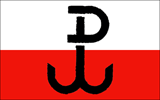The New Model Army
March-July 1937
The Kuomintang's least incompetent and best connected generals gather to re-organize the army into more modern lines than the current "howling rabble" system. To this end, the generals divide the Army into three forces- a regular army with the best experience and equipment, a reserve army consisting of those forces we can not at this time upgrade, and a "volunteer" army consisting of our very favorite peasant levies. The primary focus will be to stop our army from constantly over-running command limits.
The seven generals charged with the re-organization become known as the Seven Dragons- heroes to the chinese people. The Ministry of Propaganda has a field day with it, and soon cheap flyers are everywhere proclaiming the virtues of the great leaders organizing the KMT's defense against "Any potential future aggression, such as the kind Japan certainly won't be initiating any day now." It's bald, empty lies- most of the "Seven Dragons" are half-wits with limited experience, but at least it sounds good on the radio.
Each Army Group of the Regular Army consists of 5 corps of three divisions each, with three of the corps grouped together under the command of the AG general. One corps out of each AG has only 2 divisions, as it will be reinforced at a later date with a HQ division. Additionally, plans are underway to outfit one of the independent corps with additionaly brigades of artillery and AT guns, but such plans are relegated to the future as our current weapons technology, to use the common vernacular, "Sucks."

Three of the Seven Dragons command in the Regular Army.
The Green Banner
GBAG, the Green Banner Army Group, is deployed in Tianjin. This force of the Regular Army is under Pang Bingxun, a general of mediocre skill appointed because of his popularity in certain circles in Nanjing and due to his successes in the war with the Communists. It is named for the Green Banner Armies which served during the Qing Dynasty, groups of Han soldiers who fought with distinction in the service of the Manchus. As the current Kuomintang is largely ethnically Han Chinese, this name was chosen as a sign of honor. Plus, it sounds super cool. And maybe it's Chiang's favorite color.
 The Center Front
The Center Front
CFAG, the Center Front Army Group, is deployed in Kalgan. CFAG is named for the victorious and strong Center Front which cut through the Shanxi province, and most of the divisions in CFAG were members of the original Center Front under Zhang Zhizhong. These experienced troops, the cream of the Kuomintang army, are lead personally by His Democraticness the Generalissimo Chiang Kai-Shek.
 The Seven Dragons Army Group
The Seven Dragons Army Group
The SDAG is lead by Chiang's close friend and favored subordinate, the German von Falkenhausen. Von Falkenhausen's career has been illustrious to say the least, and he is popular among the warlords because no one thinks that he has political ambition. His force is slightly larger than the other two Regular Army groups, as it is reinforced with the Kuomintang's only cavalry corps.

Chiang, Bingxun, and Von Falkenhausen are the first three of the Seven Dragons.
The Reserves
Resources are insufficient to equip every division up to the best modern standards. That being the case, thirty divisions are organized into the reserves. There are three Armies of the Reserves, each consisting of 2 3-division corps and 2 2-division corps. The Armies of the Reserves are deployed along the front, each one supporting one of the Regular Army groups.

These marvelous gentlemen are selected to lead this brave new force for freedom.

Serving as a sort of semi-independent auxiliary for the reserves is the army of the House of Ma.

Falkenhausen's old friend, General Fuzzyface, is in command of the Ma forces- but he is not considered one of the Seven Dragons.
Wan Fulin, Zhang Zhizhong, and Feng Yuxiang are the three Dragons in the Reserve Army. They are really pretty lame.
The Cannon Fodder
The Volunteers are "volunteered" en masse by crack KMT volunteering teams. They are masses of basically untrained peasants, armed with new farming implements and ancient rifles. They are not expected to be able to hold up to the rigors of combat very well, but the generals of the KMT recall the extreme difficulties involved in taking the Island of Hainan by sea. As such, the Volunteers are positioned to guard China's northern beaches. The Southern beaches go undefended- it's just too far for the enemy to go, you see!

Six divisions of Volunteers are ordered to the front- these penal divisions are assigned China's most inexperienced but promising Major Generals, in the hopes that the rigours of warfare will make them wiser, or at the very least kill them off before they become a problem for the establishment.

Three of these Special Divisions are charged with holding Beiping.
Lin Wei's Amphibious Force
Lin Wei- the beloved leader of China's infant marine corps. He is the least experienced and lowest ranked of the Seven Dragons, and is assigned to the province of Zhanjiang, where the KMT Navy is anchored, far to the south and hopefully out of the range of Japanese naval bombers.

This is it: 76 divisions of infantry, 3 divisions of cavalry, 19 divisions of militia, 1 garrison division, 13 divisions of the Ma family's best, and 7 Dragons of varying skill and efficacy, against the massed might of Imperial Japan!
















 [/b]
[/b]



































